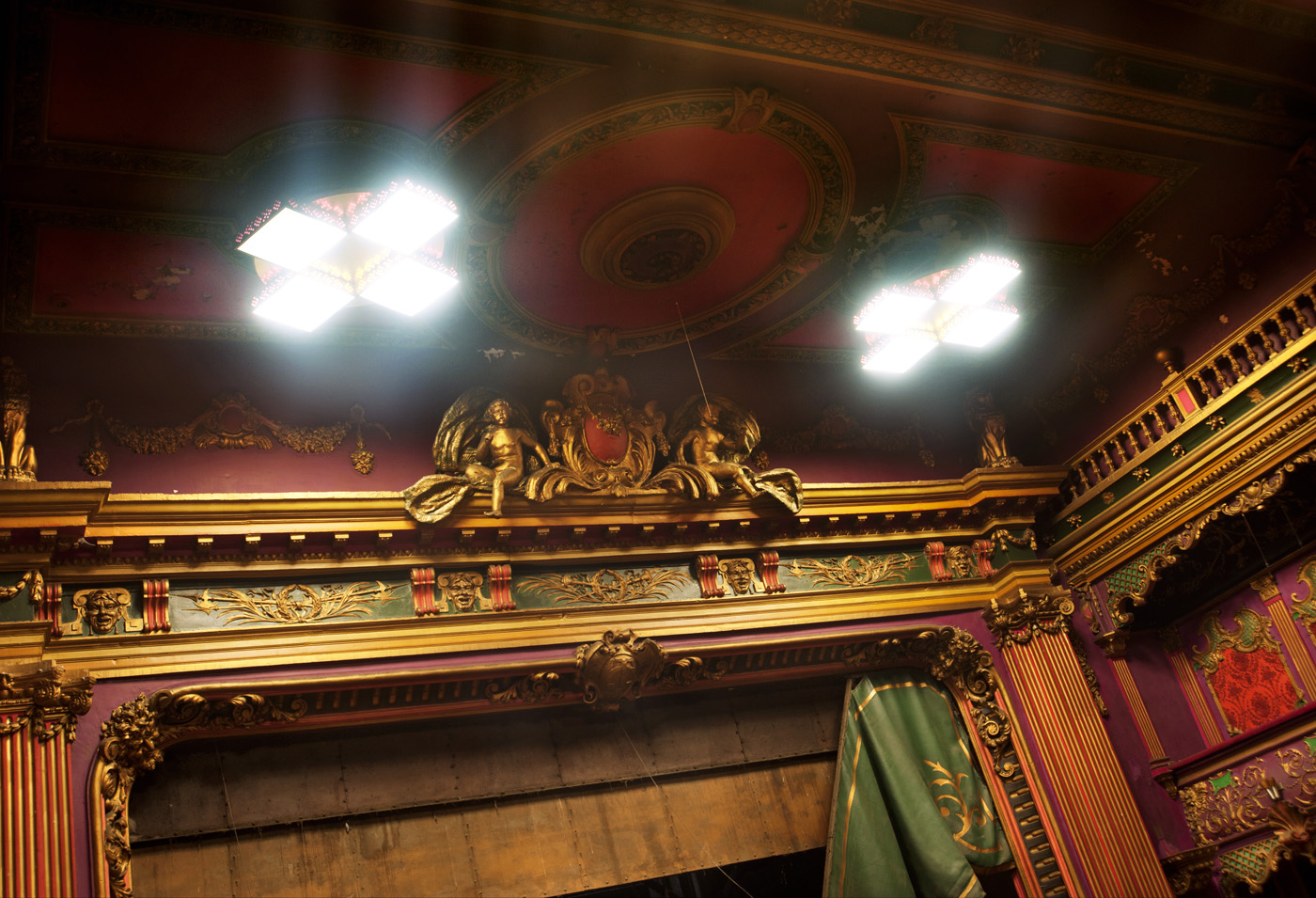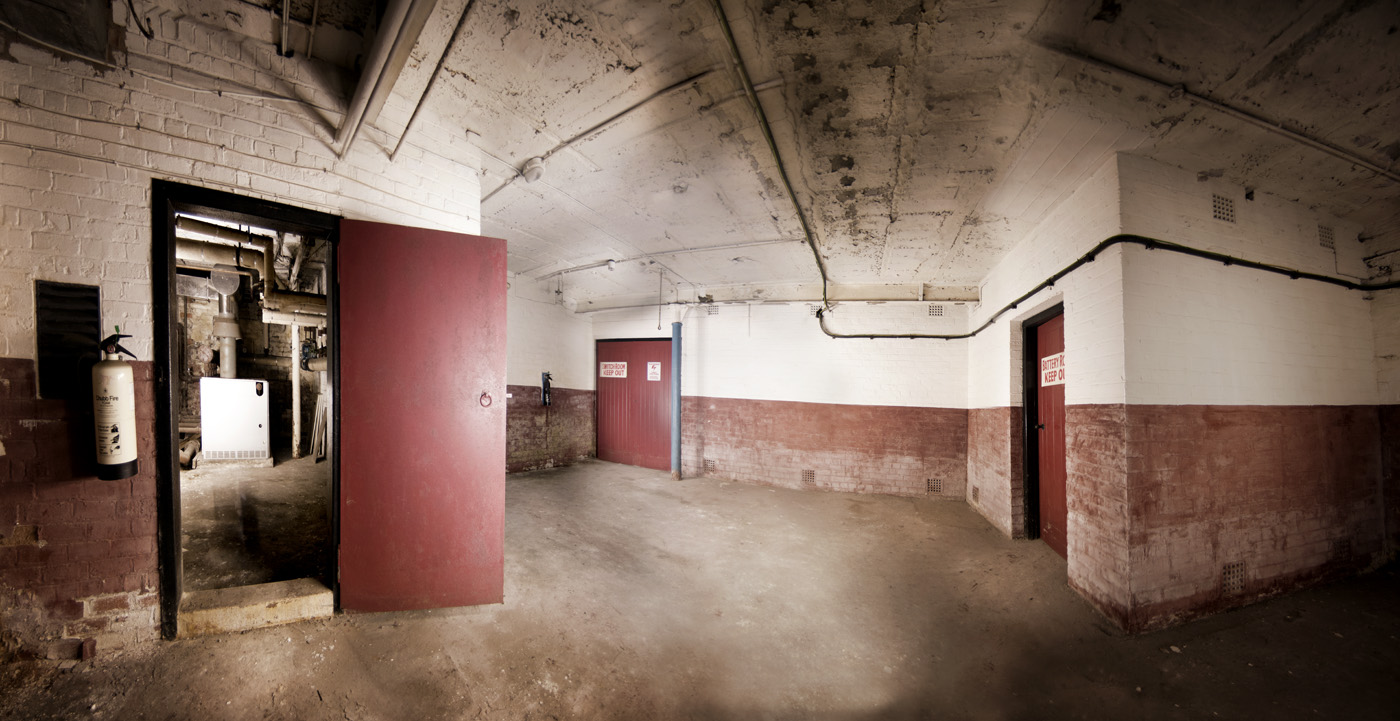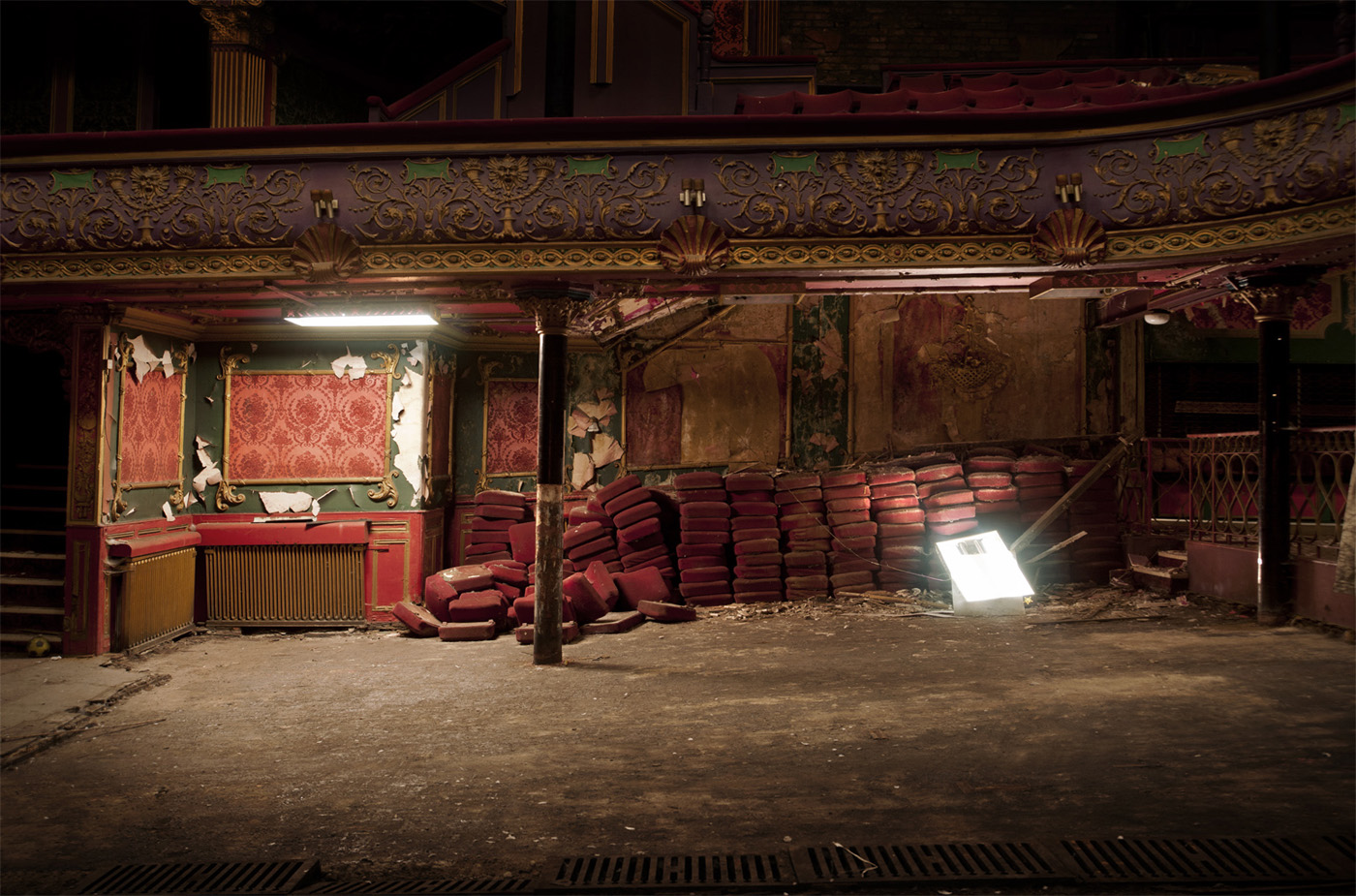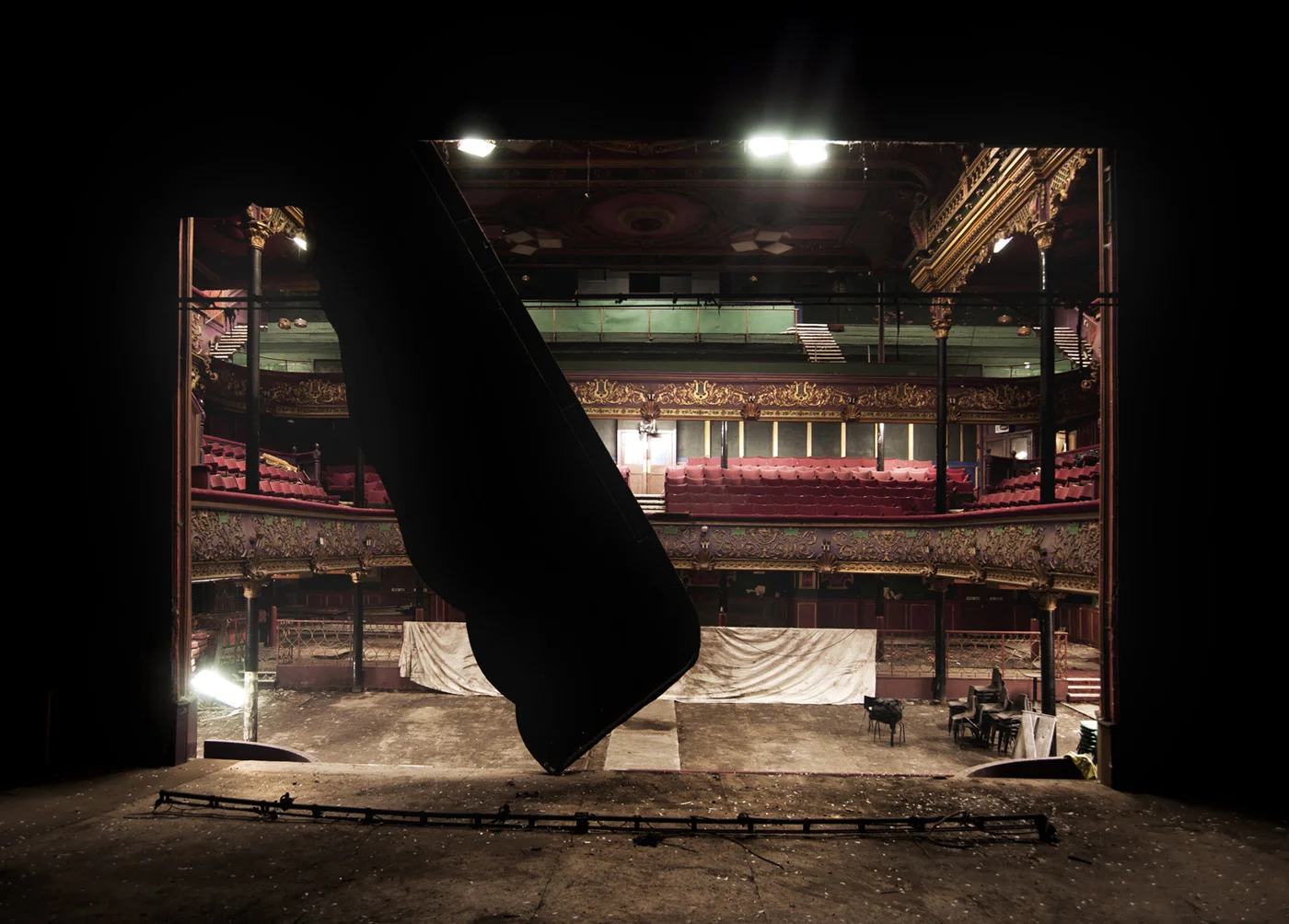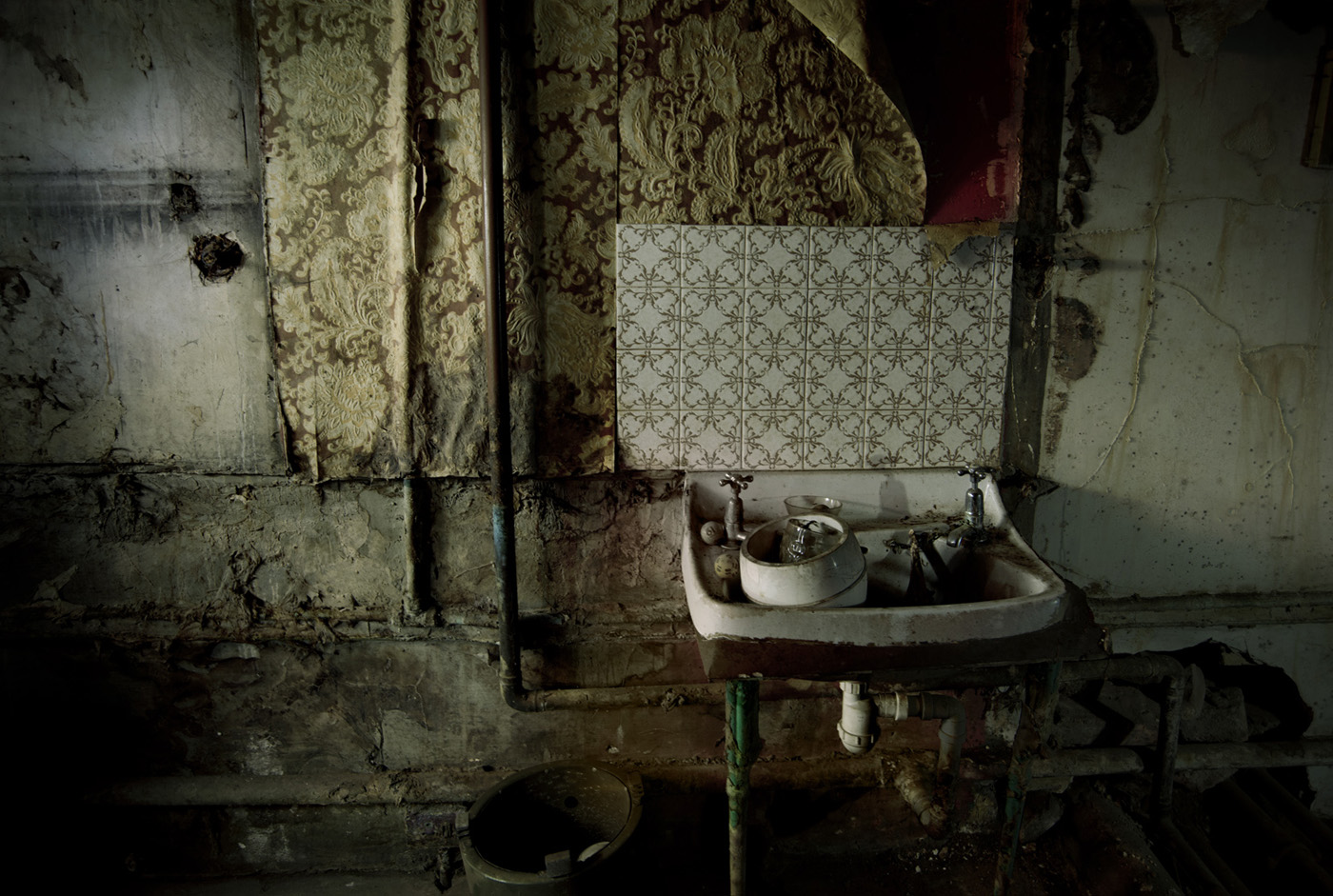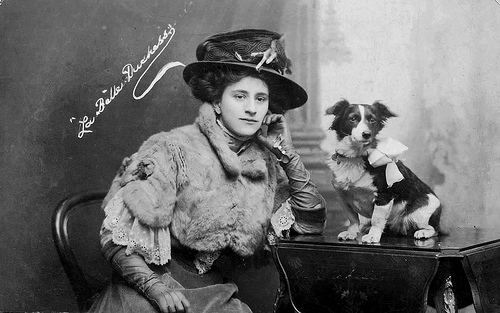THE THEATRICS OF DECAY
WRITTEN by Hayley Flynn
IMAGES by Andrew Brooks
READING TIME: 6 Minutes
Although you’d never know it from the rather dowdy re-clad exterior, inside this Hulme building you can time travel.
On October 10th 1901, exactly 110 years prior to our visit, the Hulme Hippodrome as it is now known opened its doors as a spectacular melodrama venue. Originally named the Grand Junction Theatre and Floral Hall (which explains the neighbouring pub; the Junction Hotel, which has an unexplained missing third floor as illustrated in the video below), this building hides beneath modern cladding, and you’d never guess that such a grand venue was right there before your eyes, in plain view from a busy road and bus route.
A year after the hippodrome was built, next-door the Hulme Playhouse opened. Both buildings are by architect J J Alley, and were connected by an arcade. The Grand Junction Theatre and Floral Hall, with a capacity of 3,000, was built for melodrama, with the Playhouse next door designed as a music hall. In 1905 the two venues changed names and the newly christened Hulme Hippodrome with its larger auditorium became the new music hall. Later on, the playhouse was taken over by the BBC, and it was here the first radio recording of The Beatles was made.
Inside, the hippodrome is an explosion of reds, purples and gold gilded Rococo plaster. The auditorium is designed quite differently from conventional music halls and theatres, with two galleries decked out with straight rows, a stage box on either side of the arch (known as a proscenium arch) and further upper boxes above these. In 1950 both venues were sold and renovated externally.
The popularity of the music hall escalated in the mid 19th century, meaning the hippodrome opened its doors at the very peak. In fact, if you visit the park at St John’s Street, by Granada, you’ll find a small cross and plaque commemorating the man who played a huge role in the surge in popularity of the halls. That man is William Marsden, and his plaque reads;
William Marsden who originated the Saturday half holiday was buried in this churchyard
Marsden campaigned to give our mill workers free time. Mancunians became the first workers in the country to finish at noon on a Saturday, and the music halls gave them a place to spend their leisure time and their money.
Needless to say, over the years the hippodrome and the playhouse (now the Nia Centre) have hosted a variety of stars well known to this day, from Laurel and Hardy to Nina Simone
Performers to have graced the stage here include a member of Bert Loman’s dance troupe, Rene Mills who went on to perform with a screen villain under the dastardly stage name Con Vince, and Ann Perrin, who was the youngest performing puppeteer in the world.
In the very early days of the hippodrome there was a female performer who went by the stage name La Belle Duchess. Her act involved a show of “highly trained stallions, ponies and dogs”. La Belle Duchess is a mystery today, despite being thought to have performed with Buffalo Bill Bill (at the time considered to be the most recognisable celebrity on earth) during the UK tour of his wild west show, which included a five month stint in Salford at the very end of the 19th century.
No one even knows her name.
In 1928 a new wave of stars performed at the hippodrome. The Mancunian Film Corporation was founded, and Manchester became known as the Hollywood of the North. Some stars of this enterprise are household names. George Formby is most notable, but there was another Wigan-born star who was the most popular and highly paid of his time, who often attracted more viewers than his Hollywood contemporaries and who seldom left Lancashire to perform. He was called Frank Randle.
Randle toured as a character comic prior to his film debut and performed at the hippodrome. Randle was, to put it mildly, a diva. He had been known to destroy his dressing room with an axe, he burned down a hotel when disappointed with the service and he hired a plane to drop toilet roll over Blackpool.
Randle was often drunk, and his style of comedy has been compared to Steve Coogan’s character Paul Calf. He dressed sloppily, brandishing a bottle on stage in a comedic role and then, when performing as an actor, embellished his script in a ‘vulgar manner’, resulting in being summonsed on charges of obscenity.
This big crowd puller wore his boots on the wrong feet, dismissed authority of any sort and would disappear on three day drinking binges whilst scheduled to be on set.
There are many people who have passed through these doors that are long forgotten, along with their acts, eccentricities and charm. The hippodrome had its day and in 1962 (perhaps under the name Second Manchester Repertory Theatre) it closed to make way for a new enterprise; a Mecca bingo hall. The Floral Hall section of the premises was converted to a lounge bar and snooker room.
The theatre closed completely in 1986 and was left empty for many years, until an evangelist group, Gilbert Deya Ministries, bought the site.
TODAY
And what of the Hippodrome today? Now, the Grade II listed building is in the hands of The Youth Village, a not-for-profit organisation. Operations manager, Tony Wright, intends to create a community hub at the venue, and is in the process of recruiting volunteers and raising funds for the project. A large project indeed, with an estimated £20m required, but he sees it as “a baby, not a monster” with huge potential and pay-off for the young people of Hulme.
Taking a look around the theatre it’s not difficult to see why Wright also has plans to run it as a living museum.
Down in the basement is a network of tiny rooms; some for storage, some unknown and some, in the rot, the darkness and the cold wet passages, are a million miles from the colourful splendour found upstairs. When investigating it we found, at the end of a long dark passage to the rear of the stage, a bathroom straight out of scary movie.
There’s also a battery room down here, which is thought to be the only power system of its type still installed in any building.
The hippodrome epitomises the sort of eerie, almost post-apocalyptic atmosphere you find with long deserted buildings. The restaurant besides the Floral Hall is decorated with 60s floral wallpaper, and has an ice cream freezer decaying out back. The dressing rooms are littered here and there with old toothpaste packages, drinking glasses and a wall of enormous old television sets. In the auditorium there’s reels of bingo tickets and in the bathroom, beneath beautiful plasterwork finishes, is a sink full of bingo balls.
The place is enormous, imposing, opulent, and at risk.
This is somewhere full of stories, beauty and history. Already some of that history has been forgotten, but maybe the Youth Village can help save this hidden landmark.
La Belle Duchess
La Belle Duchess on horseback
Andrew Brooks is a photographer, a digital artist and a film maker living in Manchester, his previous works include the Secret Cities exhibitions with Curated Place Please visit his site to see these images and more, in high resolution and in all their glory - exactly as they should be viewed.
This article appeared in other guises over on Manchester Confidential and Flavorwire.
Some extra shots from the day come from Rick Webb and can be found over on his Flickr account here.


